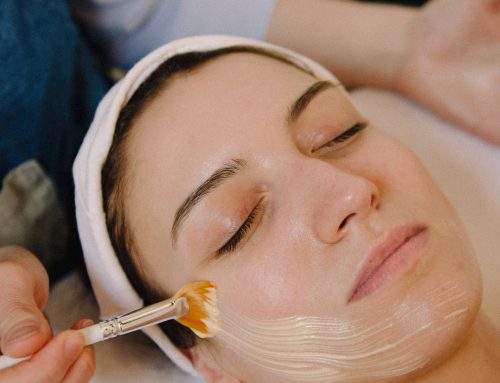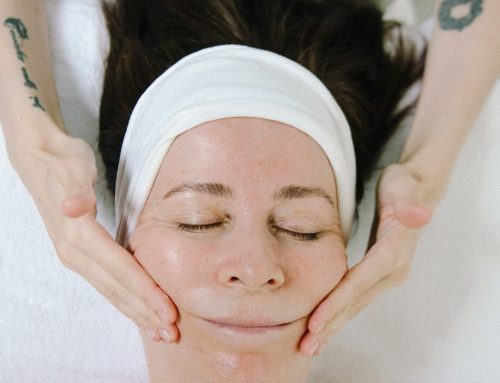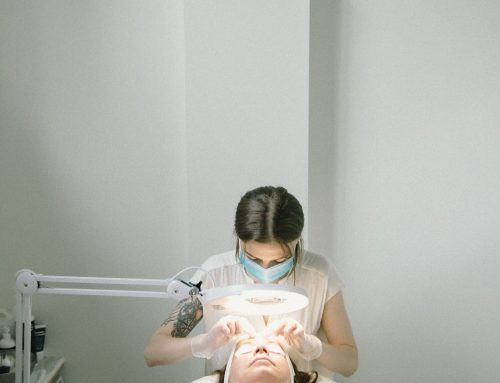Which one is right for you?
If your goal is to see positive changes in your skin, you may be wondering about microdermabrasion versus microneedling. When it comes to skincare treatments, the available options are countless and deciphering the differences between them can be overwhelming. Don’t worry—we’re here to help demystify these two treatments and discover when one is better for your current skin goals versus the other.
Microdermabrasion and microneedling tend to get grouped together—perhaps because they both start with ‘micro’. While they share the same prefix and both treatments aim to improve the appearance of the skin, they differ in their approach and outcomes. Keep reading to discover the skin benefits of each treatment.
Microdermabrasion versus Microneedling: Here’s what you need to know
Microdermabrasion
Microdermabrasion is a non-invasive procedure that involves the use of a device to physically exfoliate the surface layers of the skin. There are variety of models available on the market.
- First generation microdermabrasion technology uses fine crystals that are propelled against the skin while a suction action vaccums away the crystals along with dead skin cells.
- The next incarnation of microdermabrasion technology involves a diamond tip with varying grades of grit/courseness. A suction function pulls the skin upwards as the diamond tip abrades away the surface dead skin cells.
- Wet/dry microdermabrasion is the next generation technology combining the application of products with diamond tip and suction features. This technology alleviates pulling on the skin that can occur with dry diamond tip microdermabrasion, while enhancing product penetration.
A microdermabrasion treatment is a fantastic way to improve skin texture—particularly with regards to skin congestion. What do we mean by congestion? The rough texture and bumps associated with comedones (a.k.a. blackheads) that often shows up in the t-zone where your skin produces more sebum. While you will see results from just one treatment, monthly microdermabrasion facials will yield lasting improvements to your skin, including:
- reducing the appearance of fine lines
- repairing sun damage (rough skin texture, dullness and uneven pigmentation)
- fading post inflammatory pigmentation from acne scars
- refining pores size
- stimulating collagen production for firmer, more resilient skin
Microneedling
Microneedling is a minimally invasive treatment that involves the use of a device that creates millions of microscopic punctures in the skin called microchannels. These microchannels stimulate the body’s natural healing process, which remodels connective tissue and activates the production of collagen and elastin.
A good analogy is to think of the dermis of your skin (the layer of skin where your collagen and elastin live) like a sponge. Aging and lifestyle factors lead the the sponge becoming dry, rigid and thin. A microneedling treatment helps to bring that sponge back to life, repairing and revolumizing it, thus making it plump and flexible again. A week after the treatment, the skin looks renewed and radiant. Within four to six weeks post-treatment, the new collagen that was initiated has been developed, resulting in firmer skin.
Microneedling offers a powerful solution to:
- amplify collagen synthesis in the skin with very little risk and recovery time
- it is especially beneficial if you have concerns with textural scars, fine lines, and wrinkles
Because microneedling is a more invasive treatment, it requires more planning to undergo the treatment. You can expect your skin to be pink/red for 24-48 hours after your treatment. For an additional five to seven days, your skin will feel a bit rough and dry, and you may experience some flaking. An initial series of three treatments spaced four weeks apart is recommended to achieve optimal results, followed by regular maintenance treatments every six months. The good news is that with each subsequent treatment, your skin will bounce back and heal more quickly because we have turned back the clock and your skin behaves like younger skin.
Which One is Right for You?
Both microdermabrasion and microneedling can provide significant benefits for the skin; however as we have shared, they differ in their approach and the results they can achieve. When you are trying to decide between microdermabrasion versus microneedling, you will want to consider your immediate goals.
- If you are looking for a non-invasive treatment that can provide immediate results, microdermabrasion may be the best option for you. Consider it your ‘glow-to’ treatment for its incredible skin smoothing benefits.
- If you are looking for a more intensive treatment that can deliver powerful collagen-boosting results and address deeper concerns, microneedling is the answer.
You can also consider both treatments as part of a holistic skin health plan. Here is the process we recommend for integrating both microdermabrasion and microneedling into your positive beauty regimen:
- Book a collaboration to discuss your skin goals with a certified skin therapist. Your therapist will analyze your skin and your current at-home skincare routine and make the appropriate suggestions and adjustments to help you achieve your skin goals.
- Start with a series of 3 monthly microdermabrasion facials to nurture truly healthy skin. This preparation will ensure you get the most out of your microneedling series. If you want to accelerate the process, you can book your appointments every two weeks.
- One to two weeks after your last microdermabrasion facial, you will be ready to undergo your microneedling series: three treatments spaced four weeks apart.
- Ten to 14 days after your last microneedling session, come in for a microdermabrasion facial to reveal your most radiant complexion.
- Maintenance phase to maintain your results: monthly microdermabrasion treatments and bi-annual microneedling sessions.
It’s important to note that both treatments may not be suitable for everyone. Keloid scarring, active acne, sunburn, eczema/contact dermatitis, and psoriasis are some of the treatment contraindications to be aware of.
Microdermabrasion versus microneedling: The verdict
Ultimately, the decision between microdermabrasion and microneedling comes down to your individual needs and preferences. Both treatments can provide significant benefits for the skin, but they are very different in their approach and the results they can achieve. It’s important to consult with a certified skin therapist to determine which treatment is the best fit for your skin. With the right treatment plan, you can achieve true skin confidence.






Leave A Comment